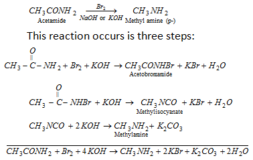Halogens in periodic table : Position

source : joy reactor.cc
Position of halogens ( F, Cl, Br & I) in periodic table:
F ,Cl, Br, I and At are present in VII A or seventeen group of periodic table. These are p-block elements. The last element At is radio-active. These elements are halogens because their salts such as NaCl , KCl, KI, MgCl2 etc are present in sea water. [Halos: sea water, Gens: born ].

source : www.tutorsonnet.com
General characteristic:
1. Electronic configuration:
9F – 1s2, 2s2,2p5
17Cl – 1s2,2s2,2p6,3s2,3p5
35Br- 1s2,2s2,2p6,3s2,3p6,4s2,3d10,4p5
53I – 1s2,2s2,2p6,3s2,3p6,4s2,3d10,4p6,5s2,4d10,5p5
85At – 1s2,2s2,2p6,3s2,3p6,4s2,3d10,4p6,5s2,4d10,5p6,6s2,4f14,5d10,6p5.
The general electronic configuration of outer most shell is ns2,np5.
2. Atomic and ionic radius:
Atomic and ionic radius increase on moving down in the group because number of shell increases. Radius of anion is always greater than its neutral atom, while radius of cation is always smaller than its neutral atom.
Example: I – > I > I+
3. Ionization potential (I.P):
I.P decreases on moving down the group because atomic radius increases. I.P. is inversely proportional to atomic radius.
4. Metallic and non-metallic character :
All the elements of this group are non-metal. Non-metallic character decreases and metallic character increases.
Iodine has some metallic characters. Such as-
- Iodine is solid.
- It has metallic lusture.
- It forms cation I+, I3+.
5. Electronegativity:
It decreases on moving down the group because size of atom increases. Decreasing order of electro-negativity of halogens is F, Cl, Br, I. Fluorine has highest electronegativity among all the known elements.
6. Electron Affinity:
It decreases on moving down the group because electronegativity decreases & metallic character increases.
The decreasing order of electron affinity of halogens is : Cl > F >Br > I . Chlorine has highest electron affinity among all the known elements.
7. Valency and oxidation state:
General oxidation state of halogens is -1 and valency is 1 but Cl, Br, I show oxidation state from -1 to +7 due to vacant d-orbital. Fluorine does not have d-orbital.
8. Nature of compound:
Halogens forms both ionic and covalent compounds. Halogens form ionic compounds with metals. Example: NaCl, KBr etc. Halogens form covalent compounds with non-metals. Example : HCl , NCl3, SF6.
9. Standard Reduction potential (Eo ) :
All halogens have positive Eo value. These are placed below hydrogen in Electro Chemical Series (ECS).
10. Oxidizing Properties:
These are strong oxidizing agents but F2 is most powerful oxidizing agent because F2 has highest Eo value. The decreasing order of oxidizing power is F2>Cl2>Br2>I2
11. Physical State :
Fluorine and chlorine are yellow , green gases. Br2 is volatile red liquid while I2 is violet solid.
12. Reactivity:
Flourine is most reactive among all the halogens. Reactivity of halogens decreases on moving down the group. Decreasing order of reactivity of halogens is F >Cl > Br> I.
13. Inter-halogen Compounds :
These compounds contain two different halogen atoms. Example: ClF, ClF3, IF7 .







